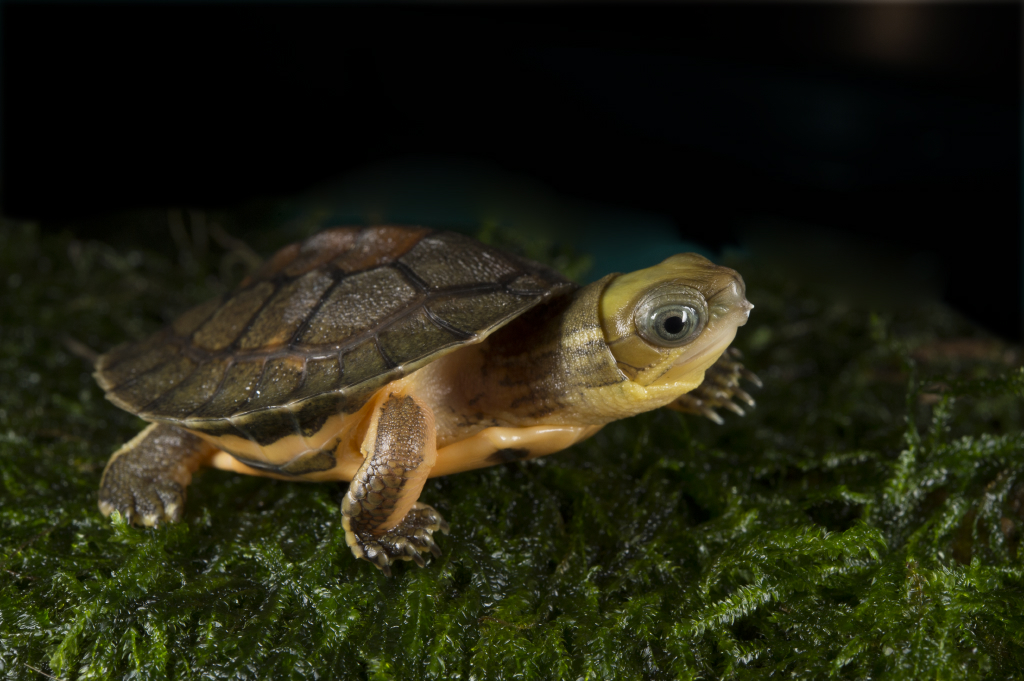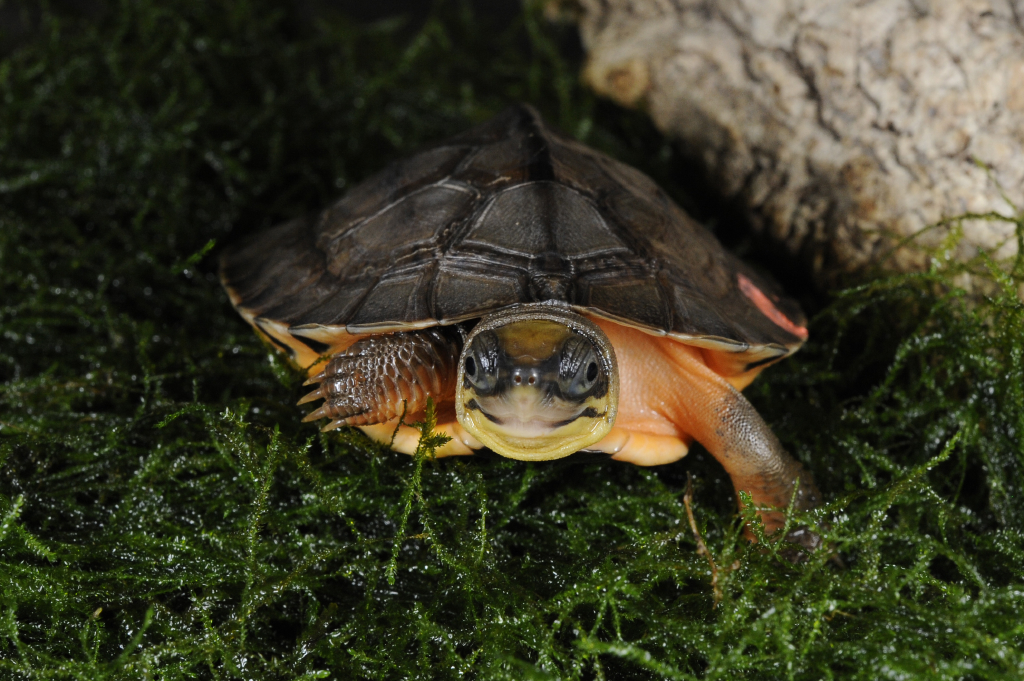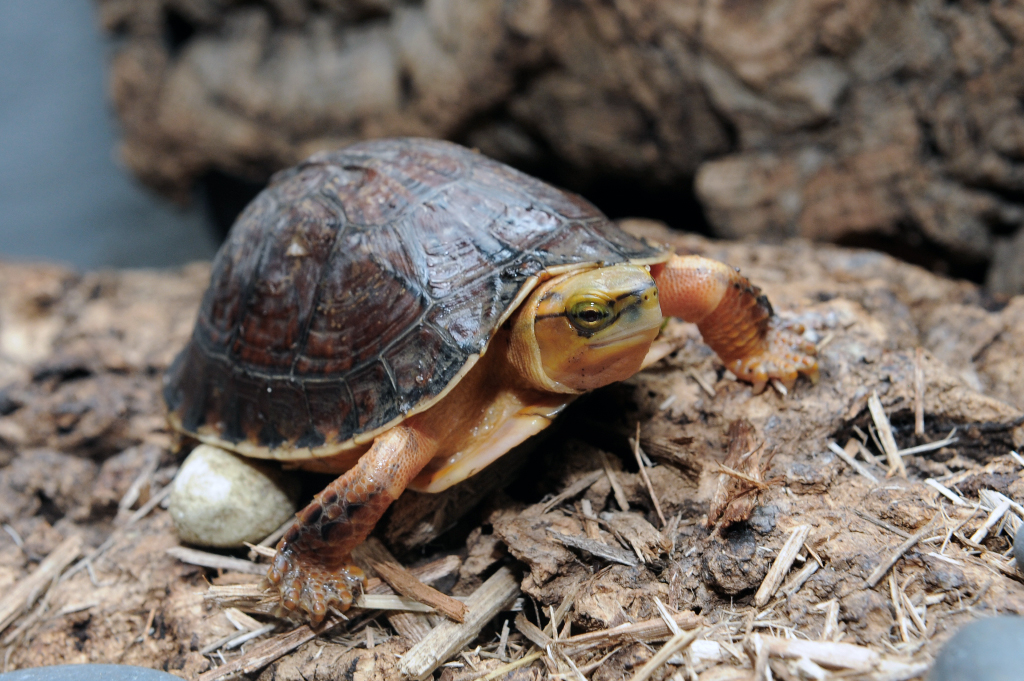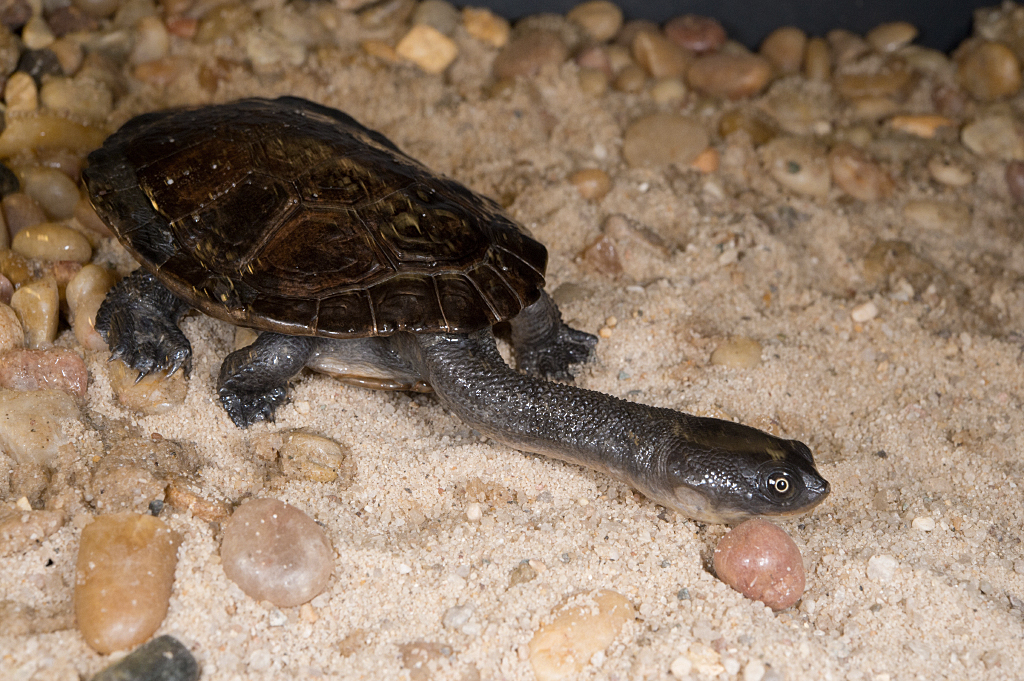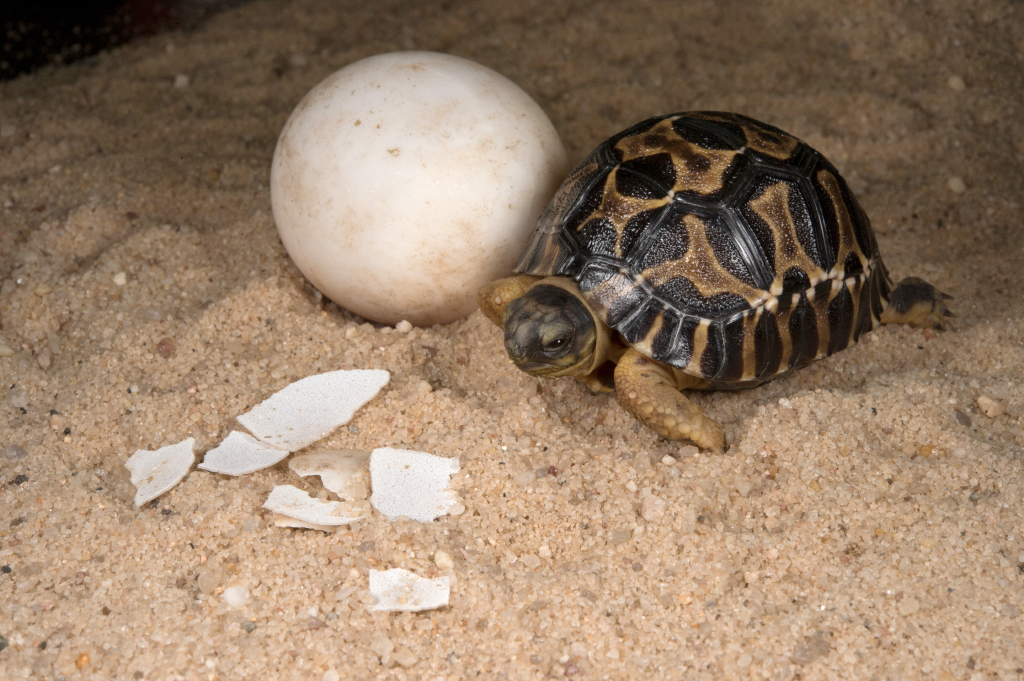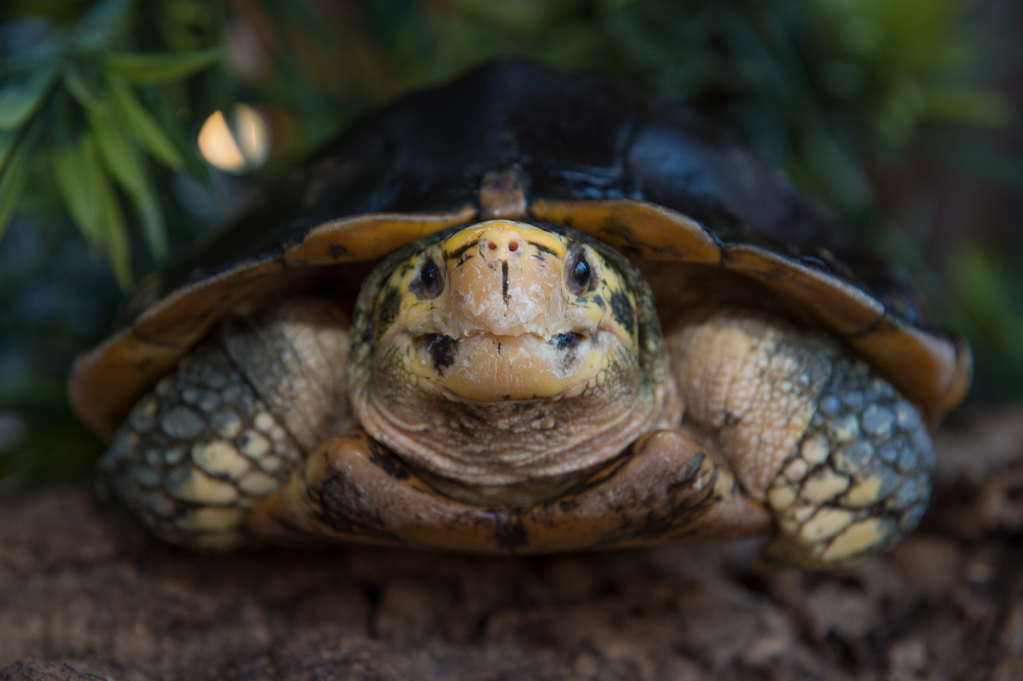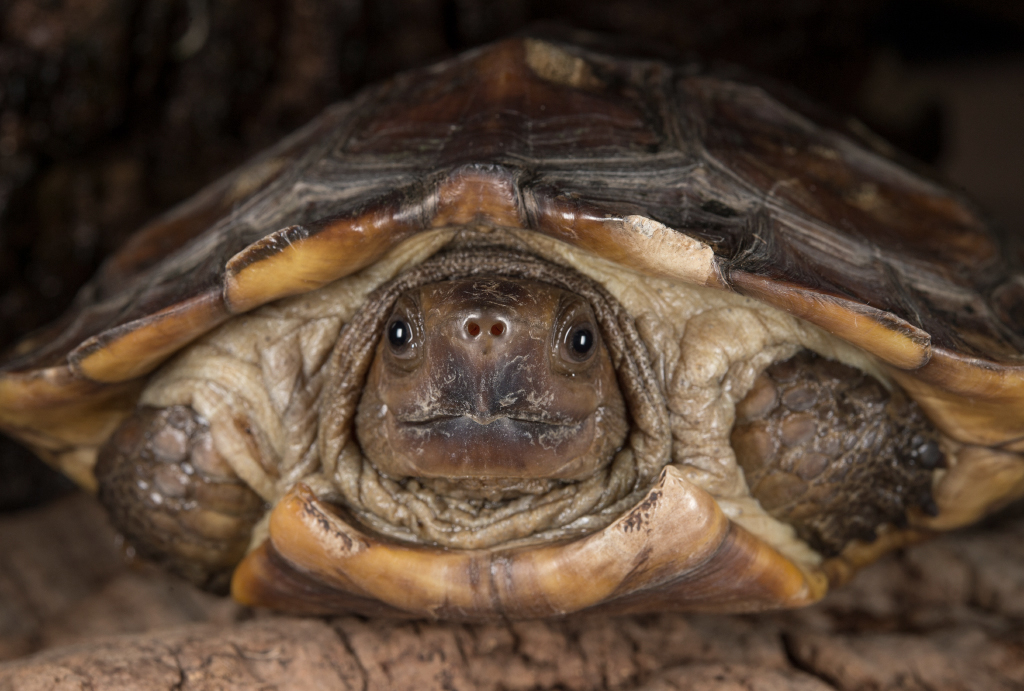8 Baby Turtles and Tortoises: Cute, and Critically Endangered (Photos)


Avi Shuter is a wild-animal keeper at the Wildlife Conservation Society's (WCS) Bronx Zoo Herpetology Department. Julie Larsen Maher is staff photographer for WCS. In addition to documenting WCS field work, Maher photographs the animals at WCS's five New York-based wildlife parks: the Bronx Zoo, Central Park Zoo, New York Aquarium, Prospect Park Zoo and Queens Zoo. The authors contributed this article to Live Science's Expert Voices: Op-Ed & Insights.
Turtles have been around for nearly 200 million years. They watched the dinosaurs go extinct and saw human beings take their place. But today, many turtle species are threatened with their own demise: More than half of the world's approximately 341 species of freshwater turtles and tortoises are on the brink of extinction. Some species have even become "functionally extinct," which means that though there may be some individuals left in the wild, the population is too small to be self-sustaining.
The factors contributing to these declines are numerous and span the globe: pollution, hunting, habitat destruction and overcollection for the pet trade. In addition, wildlife trafficking is causing the eradication of more and more species worldwide. Much of the world's turtle trade is driven by demand from China, specifically for human consumption and for use in traditional medicines.
As part of WCS's commitment to help threatened turtles and tortoises , the Bronx Zoo's Department of Herpetology houses 12 of the 40 most endangered turtles and tortoises in the world. All of them are on the International Union for Conservation of Nature (IUCN) Red List. Some species are part of coordinated breeding efforts resulting in successful hatchings of turtles and tortoises, some no larger than a quarter. (Credit: Julie Larsen Maher ©WCS.)
Chinese Yellow-headed Box Turtle Hatchling
Chinese yellow-headed box turtles were once plentiful in the highlands of the Anhui province of eastern China. Their population collapsed due to human consumption, use in traditional medicine, pollution, habitat loss and the pet trade. When these turtles hatch they are tiny, weighing about 10 grams.
Egyptian Tortoise
Get the world’s most fascinating discoveries delivered straight to your inbox.
Egyptian tortoises have disappeared from their namesake nation due to loss of habitat and collection for the pet trade. This is the second-smallest species of tortoise in the world, and they do not reach sexual maturity until they are 10 to 20 years old.
Golden Coin Turtle Hatchling
The golden coin turtle eats a more varied diet than its cousin, the Chinese yellow-headed box turtle. It eats vegetation, small insects, arthropods and fish.
McCord's Box Turtle
The natural range of the McCord's box turtle is mostly undiscovered. The species is predominantly known from its availability in Chinese markets.
Mary River Turtle
Mary River turtles are endangered, short-necked turtles with a remarkable adaptation: They perform "cloacal breathing." In most species, the cloaca (or the turtle's "back side") is the posterior opening that serves as the only orifice for waste and reproduction. However, the Mary River turtle can also use its cloaca to absorb oxygen directly from water.
Roti Island Snake-necked Turtle Hatchling
Roti Island snake-necked turtles live in the swamps and lakes found on the tiny island of Roti in Indonesia. Their necks fold sideways rather than straight back when they pull into their shells. These turtles have been over-collected for the pet trade and are critically endangered.
Radiated Tortoise Hatchling
Madagascar's radiated tortoises have all but disappeared from their island home due to habitat loss, hunting for their meat, and collection for the pet trade. The females lay from three to 12 eggs, which resemble Ping-Pong balls. The hatchlings have beautiful, roundish shells and, at 1.5 inches, are miniature versions of their 35-pound parents. [Shell Shock: 25 Turtle Species in Terrible Trouble]
Sulawesi Forest Turtle
Sulawesi forest turtles are critically endangered.
Sulawesi Forest Turtle
Trade in East Asia markets has decimated their population, which is found only on the remote Indonesian island that gives this turtle its name.
Read more stories on turtles, tortoises and other wildlife in Wild View by Avishai Shuter and Julie Larsen Maher.
Follow all of the Expert Voices issues and debates — and become part of the discussion — on Facebook, Twitter and Google+. The views expressed are those of the author and do not necessarily reflect the views of the publisher. This version of the article was originally published on Live Science.


